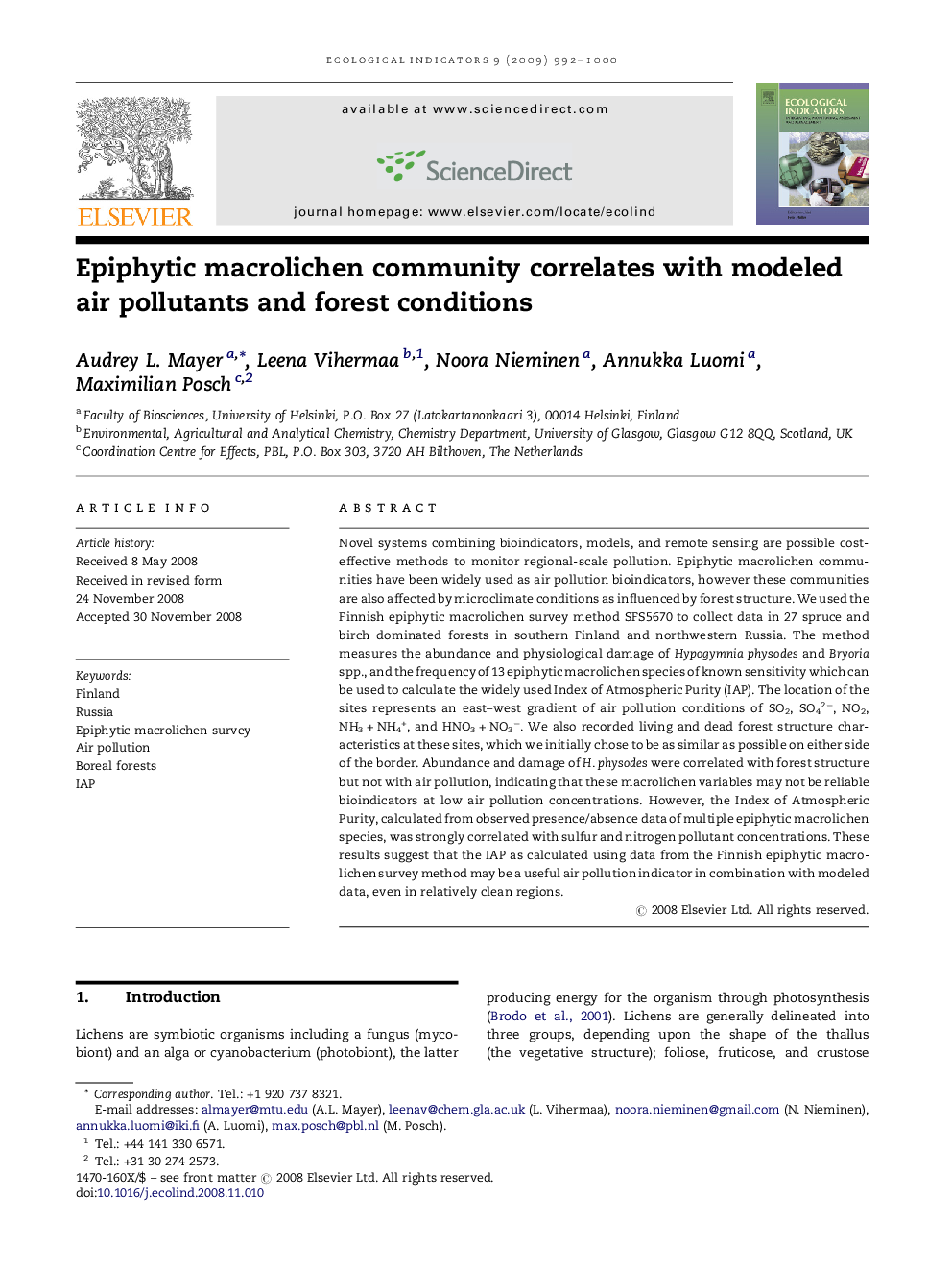| Article ID | Journal | Published Year | Pages | File Type |
|---|---|---|---|---|
| 4374523 | Ecological Indicators | 2009 | 9 Pages |
Abstract
Novel systems combining bioindicators, models, and remote sensing are possible cost-effective methods to monitor regional-scale pollution. Epiphytic macrolichen communities have been widely used as air pollution bioindicators, however these communities are also affected by microclimate conditions as influenced by forest structure. We used the Finnish epiphytic macrolichen survey method SFS5670 to collect data in 27 spruce and birch dominated forests in southern Finland and northwestern Russia. The method measures the abundance and physiological damage of Hypogymnia physodes and Bryoria spp., and the frequency of 13 epiphytic macrolichen species of known sensitivity which can be used to calculate the widely used Index of Atmospheric Purity (IAP). The location of the sites represents an east-west gradient of air pollution conditions of SO2, SO42â, NO2, NH3Â +Â NH4+, and HNO3Â +Â NO3â. We also recorded living and dead forest structure characteristics at these sites, which we initially chose to be as similar as possible on either side of the border. Abundance and damage of H. physodes were correlated with forest structure but not with air pollution, indicating that these macrolichen variables may not be reliable bioindicators at low air pollution concentrations. However, the Index of Atmospheric Purity, calculated from observed presence/absence data of multiple epiphytic macrolichen species, was strongly correlated with sulfur and nitrogen pollutant concentrations. These results suggest that the IAP as calculated using data from the Finnish epiphytic macrolichen survey method may be a useful air pollution indicator in combination with modeled data, even in relatively clean regions.
Related Topics
Life Sciences
Agricultural and Biological Sciences
Ecology, Evolution, Behavior and Systematics
Authors
Audrey L. Mayer, Leena Vihermaa, Noora Nieminen, Annukka Luomi, Maximilian Posch,
